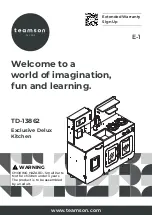
GOOD TO KNOW
Water can transmit forces becaus
e it can’t be
compressed — unlike air, which c
an be compressed
up to a certain point. Water, and liquids in gener
al,
aren’t compressible because the mol
ecules are
packed closer together in a liquid than in a gas. The
branch of physics that studies this phenomenon is
known as “hydraulics.”
WHY DO SHIPS FLOAT?
When an object enters a body of wat
er, it pushes
water molecules aside as it enters the wat
er. A ship
will float if the water that it displ
aces weighs more
than the vessel itself. Even though ships c
an weigh
many thousands of tons, their shapes ar
e cleverly
designed to allow them to displac
e enough water to
allow them to float.
Try out this experiment: Fill your t
ub with water,
then take some modeling clay and shape s
ome of it
into a ball and some of it into a smal
l boat. The ball
will sink, while the boat will float on t
op of the
water. The boat displaces more wat
er than the ball.
4
Place the full syringe, with the plunger pulled
out, into the syringe holder. To do this, carefully
thread the tube through one of the holes, pulling
it down gently from above, until the syringe is
suspended from the holder. Place an empty
syringe, with the plunger fully pushed in, into a
hole at the other side of the holder and connect
the free end of the tube that’s filled with water to
the empty syringe.
4
?
WHAT’S HAPPENING
When you carefully press the protruding
plunger down, water flows into the empty
syringe at the other end of the tube and
pushes the plunger up on the other
side.
The initial movement you made is
transmitted by the water. What happens
if you hold the plunger of the empty
syringe down, while also carefully
pressing the plunger of the full syringe
down? Can the water be compressed?
Empty the two syringes and the tube
into a sink and try the same
experiment using air instead of
water this time. Can the air be
compressed?
WHAT IS WATER?
Like everything in the worl
d, water is made up of tiny particl
es
that can’t be seen with the naked eye. W
e call these building
blocks “atoms.” The most basic buil
ding blocks are known as
“elements” and these can be combined
into larger groups called
“molecules” as a result of chemical reactions. W
ater is made up
of many tiny water molecules, which in t
urn are made up of the
elements “oxygen“ and “hydrogen.” Each wat
er molecule
consists of two hydrogen atoms attached t
o one oxygen atom.
10














































